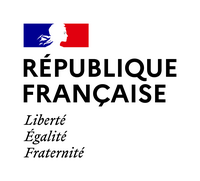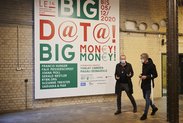Francis Hunger, Falk Messerschmidt, Joana Moll, Gerald Nestler, RYBN.ORG, Suzanne Treister, Varvara & Mar
Stipendiaten/Grantee: Yonlay Cabrera, Magali Desbazeille
In der 15. Ausgabe unseres hauseigenen Magazins VIERZEHN finden Sie ausführliche Informationen zu den künstlerischen Positionen zum nachlesen // If you want to read more about the works presented in the exhibition, feel free to take a look into the newest issue of our magazine VIERZEHN
Fatal Error #1
Am 3. April 2018 schoss die vegane Tierrechtsaktivistin und erfolgreiche Influencerin Nasim Najafi Aghdam im kalifornischen YouTube-Hauptquartier wild um sich und verletzte drei Personen, bevor sie sich selbst tötete. Sie gab vor, die Onlinevideoplattform zu hassen, weil »engstirnige neue Angestellte« ihren Kanal so filtern würden, dass ihre Popularität, Klickzahlen und Einnahmen dadurch eingebrochen seien.
Fatal Error #2
Als der junge Gründer der Kryptogeld-Börse QuadrigaCX, Gerald Cotten, im Dezember 2018 überraschend in Indien verstarb, verloren über 100.000 Nutzerinnen und Nutzer ein Vermögen von insgesamt 145 Millionen US-Dollar. Niemand außer Cotten kannte den Zugang zu seinem verschlüsselten Laptop, auf dem die eingelegten Kryptoguthaben in einer Cold Wallet gesichert sein sollten.
In beiden Fällen kollidieren digitales und analoges Leben fatal. Im ersten führte die digitale Entwertung zum selbstmörderischen Amoklauf. Im zweiten verursachte der plötzliche Tod die Implosion eines digitalen Anlageversprechens. Tragisch zeigte sich jeweils, was zunehmend zu unserem Alltag wird, die Verschmelzung von Persönlichkeitsprofilen und Geldwerten im Digitalen.
Datenindustrien
Die smarten und kostenfreien Onlinedienste aus dem Silicon Valley sind darauf programmiert, Daten zu sammeln. Aus deren Akkumulation erwächst uns ein Datenschatten, der Auskunft über unsere gelebten Interessen und geheimen Vorlieben gibt. Unser »digitaler Zwilling« prognostiziert unser zukünftiges Handeln. Big-Data-Farmen berechnen unsere Wünsche, bevor sie uns selbst bewusst werden. »Wir sind das Nutzvieh, wir werden bewirtschaftet. Google und Facebook beackern uns und extrahieren Informationen aus uns, während wir uns mit ihren funkelnden Spielzeugen beschäftigen«, stellt der Digitalaktivist Aral Balkan klar. »Den Zugang dazu vermieten sie an ihre echten Kunden« (Balkan, 2019). Der Marktwert von Influencer*innen bemisst sich anhand Tausender von Klicks, Likes und Kommentaren. Der harte neo-liberale Alltag öffentlich gelebter Ideal-Individualität macht den Burnout auf YouTube und Instagram notorisch und die Online-Meditation zum neuen Massenphänomen. »Das ist alles, was ich jemals wollte. Und warum zum Teufel bin ich so unglücklich? Es macht keinen Sinn!«, fluchte die YouTuberin ElleOfTheMills kurze Zeit nachdem sie mit ihrem Coming-Out online die Millionenmarke der Abonnements geknackt hatte und nahm sich eine Pause, offline. Während Mills bis heute erfolgreich videobloggt, ist die Online-Aktivistin Aghdam tot. Beide zeigen helle und düstere Seiten des Rollen- und Geschäftsmodells Influencerin.
Smart gelenkte Demokratien
Ob ökonomisch gezielt oder ungesteuert, die intransparente Algorithmenmacht der Social-Media-Plattformen infiziert die Gesellschaftspsyche. Sie eignet sich auch als Instrument zur Manipulation der Demokratie, wie der Skandal um die diabolische Spin-Doctor-Rolle der Firma Cambridge Analytica im US-Wahlkampf 2017 zeigte.
Zur Steigerung von »Aufrichtigkeit« und »Integrität« verschmelzen Wirtschaftspolitik und staatliche Kontrolle in der boomenden Digitalökonomie der chinesischen Volksrepublik. Jasmin, Pflaumenblüte oder Sesam sind blumige Namen für Pilotprojekte öffentlicher Online-Scoring-Systeme. Sie sollen den aktuellen Stand der Vertrauenswürdigkeit von Unternehmen, NGOs und Einzelpersonen online nachvollziehbar machen. Bei guter Führung gibt es Vergünstigungen – wie beispielsweise pfandlosen Fahrradverleih oder Zahlungsaufschub für Arzneien, bei Negativwertungen wird es unmöglich, Flugtickets online zu buchen oder die Kinder auf eine Privatschule zu schicken. Liefe das Experiment nach kommunistischem Plan soll die Teilnahme an einem solchen Sozialkredit-System in naher Zukunft für alle in China verpflichtend sein.
Der Kerbholzcode
Einige dieser Systeme setzen auf die lückenlosen Codes der Blockchain-Technologie. Diese auf dezentralen Netzwerken basierende Computertechnik funktioniert wie antike Kerbstöcke. Vor der Erfindung des Geldes ritzten Gebende und Nehmende in zwei parallel liegende identische Hölzer Kerben entsprechend der Schuld. Keiner und keinem war es möglich, an der Zahl der Ritzen ohne ihr oder sein Gegenüber etwas zu ändern. Der Vergleich der Hölzer hätte die Fälschung verraten. Mit den auf Blockketten basierenden Peer-to-Peer- und Kryptowährungen wie BitCoin, Ether und Libra Coin kehren vorhistorische Aufschreibesysteme wie das Kerbholz als Computercode ins Wirtschaftsleben zurück. Mit ihren Aktien, Anleihen, Schuldscheinen, Wechseln und Optionen hat die gegenwärtige Finanzindustrie die elaborierten und geldlosen Notationsökonomien, die die Archäologie in antiken Tempelanlagen entdeckte, sogar überflügelt. Der im Münzgeld komprimierte Wert machte diese umständlichen vorhistorischen Datenarchive überflüssig. Aktuelle Rechenleistung und Speichervolumen machen wiederum das datensparsame Geld uninteressant. Das Bargeld ist bereits am Verschwinden. Wenn Algorithmen Produkte, Leistungen und Konsument*innen zusammenführen, könnte die Funktion von Geld und Produktpreis selbst obsolet werden.
Finanzindustrien
Im Zeitalter der Nullzinspolitik beobachten wir eine gigantische Entwertung des Geldes, die sich absurderweise in der märchenhaften Aufblähung von Reichtümern und Spekulationen zeigt. Mit Hilfe von Mathematik und Informationstechnologien wurde in den vergangenen Dekaden aus dem Börsenhandel eine Finanzindustrie, die die gesamte Weltwirtschaft dominiert. Die Entkopplung des US-Dollars vom Goldwert und der starren Fixierung des Währungssystems der Nachkriegszeit in den frühen 1970ern bedeutete eine immense Aufwertung der Devisenmärkte. Damit emanzipierte sich auch das mathematische Modell des Derivates als Finanzinstrument. Optionen, Futures, Forwards, Swaps sind Verträge auf zukünftige Geschäfte ohne eigenen Wert. Sie leiten ihren Wert von Devisen, Aktien, Rohstoffen usw. ab. Sie werden auf regulierten Börsen wie der Chicago Board Options Exchange und zahlreichen Dark Pools von Banken gehandelt. Mit 700 Billionen US-Dollar soll der Nominalwert aller ausstehenden Derivatekontrakte gegenwärtig das Weltbruttoinlandsprodukt um fast das Zehnfache übersteigen. Im »derivativen Paradigma« hat das Geld die Funktion des Zahlens, Tausches und Speicherns verloren und »den Aggregatzustand einer spekulativen Bewertung von Beziehungen aller Art angenommen« (Avanessian & Nestler, 2015).
Edward O. Thorp ist einer der Pioniere der mathematischen Risikoberechnung. 1961 knackte er mit Hilfe mathematischer Modelle und dem ersten tragbaren Computer, den er mit dem Informatikpionier Claude E. Shannon (1916-2001) entwickelte, das Glücksspiel Black Jack in Las Vegas’ Spielbanken (»Beat the Dealer«). Nach diesem Erfolg gründete er den ersten quantitativen Hedgefonds und wurde an der Börse reich (»Beat the Market«). Thorp nahm die Black-Scholes-Formel vorweg, die als Meilenstein zur Bewertung von Finanzoptionen die Börsen zum Tummelplatz für die »Quants« machte, die mit statistischen Methoden die Gewinnchancen und zukünftige Risiken berechenbar machen sollen. Elektronische Börsen wie die NASDAQ und die Überwachung von Finanzmarktdaten am Bloomberg-Terminal führen mit Entortung und Dezentralisierung der Finanzindustrie zur Entwertung des nun menschenleeren Börsenparketts. Automatisierter Handel, evolutionäre Algorithmen und Big Data vergrößerten den Umfang und beschleunigten das Tempo der Handelstransaktionen. Von »Flashboys« (Michael Lewis) betriebene Hochgeschwindigkeitscomputersyteme agieren praktisch aus der Zukunft, indem sie die minimalen Zeitverzögerungen im elektronischen Handel überlisten, um Handelsvorteile zu erlangen. Die Maschinen agieren so undurchsichtig und schnell, dass bei Flash Crashs wie am 6. Mai 2010 die Menschen nur entsetzt zusehen können, wie binnen Minuten die Kurse und Leitindices ohne erkennbaren Grund ins Bodenlose fallen.
Matching
In seinem Buch »Geld« (2017) hält der Kulturphilosoph Stefan Heidenreich die Zeit für eine vom Geld befreite Gesellschaft bereit:
»Die sporadischen Flash-Crashs zeigen, was passiert, wenn Algos mit Aktien und anderen Papieren spekulieren. Wenn sich aus unserem Profil, unseren Likes und unserer Konsumgeschichte errechnen lässt, was wer wann kaufen wird, schnurrt der Markt auf einem singulären Moment zusammen. Im Preis liegt dann keine zusätzliche Information mehr. Formell wird die Verteilung noch auf Preise abgebildet und in Geld verrechnet, aber in den zugrunde liegenden Datenströmen zeigt sich bereits die technologische Basis einer non-monetären Ökonomie.«
In naher Zukunft könnten Algorithmen über die gerechte Verteilung von Gütern entscheiden und die entfremdenden Effekte von Geld und Reichtum ausschalten. Vorformen dieser neuen Gesellschaft des algorithmischen Matchings von individuellen Bedürfnissen und Produkten bzw. Leistungen sieht Heidenreich in dem System von Skills, Reputations und Quests von Computerspielen, in Freundeskreisen in Sozialen Netzwerken und im Online-Dating. Smart New World?
Diese Ausstellung stellt sich nicht nur die Frage, ob sich diese Potentiale als eine geldlose, freie Gesellschaft oder als digitaler Kontrollstaat verwirklichen. Sie unternimmt eine theoretische und künstlerische Standortbestimmung zu einem Zeitpunkt, an dem neue Technologien unsere soziale Identität und unser Wirtschaftsdenken in Frage stellen. Sie präsentiert Positionen zeitgenössischer Kunst, die Aspekte und Potentiale der skizzierten Entwicklung von digitalen Gemeinschaften und Währungen beleuchten. Spielerische Kunstvermittlungsangebote vertiefen künstlerische, politische und ökonomische Aspekte.
Gefördert durch



Mit der freundlichen Unterstützung des Bureau des arts plastiques des Institut français und des französischen Kulturministeriums sowie des Österreichischen Kulturforums Berlin.



English version (German version above)
Fatal Error #1
On April 3, 2018, vegan animal rights activist and successful influencer Nasim Najafi Aghdam opened fire at YouTube’s California headquarters, injuring three people before killing herself. She was purported to have hated the online video platform because “narrow-minded new employees” allegedly filtered her channel in such a way that caused a nosedive in its popularity, click numbers and revenue.
Fatal Error #2
When Gerald Cotten, the young founder of the cryptocurrency exchange QuadrigaCX, unexpectedly died in India in December 2018, over 100,000 users lost a total of 145 million US Dollars. No one besides Cotten knew how to access his encrypted laptop, which was supposed to secure the deposited crypto balances in a cold wallet.
In both cases, digital and analog life collide fatally. In the first, digital devaluation led to a suicidal rampage. In the second, sudden death caused the implosion of a digital investment promise. Each is a tragic case of the melding of personality profiles and monetary values in the digital world—something that is increasingly part of our everyday life.
Data industries
Silicon Valley’s smart and free online services are programmed to collect data. From this accumulation arises a data shadow that gives information about our lived interests and secret preferences. Our “digital twin” predicts our future actions. Big data farms compute our desires before we even become aware of them ourselves. “We are the livestock, we are being farmed. Google and Facebook are sifting and extracting information from us while we are busy with their sparkling toys,” says digital activist Aral Balkan. “They rent access to this to their real customers”. (Balkan, 2019) The market value of influencers is measured by thousands of clicks, likes and comments. The hard neo-liberal daily routine of publicly lived ideal individuality has made burnout on YouTube and Instagram notorious and turned online meditation into a new mass phenomenon. “This is all I ever wanted, and why the fuck am I so fucking unhappy? It doesn’t make sense!” swore YouTuber ElleOfTheMills shortly after she had cracked the one million subscriptions mark with her online coming-out and then took a break, offline. While Mills is still successfully videoblogging, online activist Aghdam is dead. They show the light and dark sides of the influencer as role model and business model.
Smart-controlled democracies
Whether economically targeted or unguided, the opaque algorithmic power of social media platforms infects the social psyche. It is also a suitable instrument for manipulating democracy, as demonstrated by the scandal surrounding the diabolical spin-doctor role of Cambridge Analytica in the 2016 US election campaign.
In order to increase “trustworthiness” and “integrity”, economic policy and state control merge in the booming digital economy of the People’s Republic of China. Jasmine, Plum Blossom and Sesame are the flowery names for pilot versions of public online scoring systems. They are intended to make the current state of trustworthiness of companies, NGOs and individuals trackable online. With good conduct, there are perks, such as free bike rental or deferred payment for medicines. In the case of negative ratings, it becomes impossible to book airline tickets online or send children to a private school. If the experiment follows the Communist Party’s plan, participation in such a social credit system would be mandatory in the near future for everyone in China.
The wood-notch code
Some of these systems rely on the seamless codes of blockchain technology. Based on decentralized networks, this computer technology works like antique tally sticks. Before the invention of money, lenders and borrowers carved notches corresponding to the amount of debt into a piece of wood that was then split lengthwise into two halves. No one was able to change the number of notches without their counterparts’ half. The comparison of the wood pieces would have betrayed the falsification. In blockchain-based peer-to-peer and cryptocurrencies such as BitCoin, Ether and Libra Coin, historical written systems such as the tally stick return to economic life as computer code. The financial industry—with its shares, bonds, notes, bills of exchange and options—has surpassed the elaborate and moneyless systems of notation that archaeology has discovered in ancient temples. The value compressed into coinage made cumbersome, historical data archives superfluous. In turn, current computing power and storage volumes make data-saving hard money uninteresting. Cash is already disappearing. When algorithms bring together products, services and consumers, the function of money and product price could themselves become obsolete.
Financial industries
In the age of zero-interest policy, we are witnessing a gigantic devaluation of money, which absurdly manifests itself in the fantastic inflating of wealth and speculation. With the help of mathematics and information technologies, stock exchange trading has in recent decades turned into a financial industry that dominates the entire global economy. In the early 1970s, the decoupling of the US Dollar from the value of gold and the rigid fixing of the post-war monetary system led to a huge appreciation of the currency markets. The mathematical model of derivatives as a financial instrument was thus liberated. Options, futures, forwards and swaps are contracts on future deals with no intrinsic value. They derive their value from foreign currency, equities, commodities, etc. They are traded on regulated exchanges such as the Chicago Board Options Exchange and numerous banks’ dark pools. At 700 trillion US Dollars, the nominal value of all outstanding derivative contracts is currently estimated to exceed world gross domestic product by almost ten times. In the “derivative paradigm”, money has lost the function of numbering, exchanging and saving and has “assumed the aggregate state of a speculative evaluation of relationships of all kinds”. (Avanessian & Nestler, 2015)
Edward O. Thorp is one of the pioneers of mathematical risk calculation. In 1961, with the help of mathematical models and the first wearable computer—which he developed with computer science pioneer Claude E. Shannon (1916-2001)—Thorp cracked the game of blackjack in Las Vegas’ casinos (Beat the Dealer). After this success, he founded the first quantitative hedge fund and became rich on the stock market (Beat the Market). Thorp anticipated the Black-Scholes formula, which—as a milestone for the valuation of financial options—made the stock exchanges a playground for the “quants”, who use statistical methods to make future risks and the chances of winning predictable. Electronic exchanges such as the NASDAQ and the monitoring of financial market data through the Bloomberg Terminal, along with the delocation and decentralization of the financial industry, lead to the devaluation of the now-deserted trading floor. Automated trading, evolutionary algorithms and big data increased the scope and accelerated the pace of trading transactions. High-speed computer systems run by “Flashboys” (Michael Lewis) operate practically from the future by outsmarting the minimal time delays of e-commerce to gain trading advantages. The machines are so opaque and fast that in flash crashes, like that on May 6, 2010, people can only watch in horror as prices and lead indices fall into the abyss within minutes for no apparent reason.
Matching
In his book Money (2017), cultural philosopher Stefan Heidenreich thinks the time has come for a society free from money:
“The sporadic flash crashes show what happens when algos speculate with stocks and other securities. When it is possible to use our profile to calculate our likes and our consumer history—what who will buy and when—the market shrinks to a singular moment. Then there is no additional information in the price anymore. Formally, distribution is still represented through prices and settled in money, but the underlying data flows already show the technological basis of a non-monetary economy.”
In the near future, algorithms could decide on the fair distribution of goods and eliminate the alienating effects of money and wealth. Heidenreich sees predecessors of this new society of algorithmic matching of individual needs and products or services in the system of skills, reputations and quests of computer games, in circles of friends in social networks and in online dating. Smart New World?
The exhibition not only raises the question of whether these potentials can be realized as a moneyless, free society or as a digital control state, but also undertakes a theoretical and artistic position fixing at a time when new technologies are calling into question our social identities and economic thinking. It presents perspectives from contemporary art that shed light on aspects and potentials of the above-outlined development of digital communities and currencies. Playful art education offerings deepen artistic, political and economic aspects.
Funded by

With the friendly support of the Bureau des arts plastiques of the Institut français, the French Ministry of Culture and the Österreichischen Kulturforum Berlin.




















